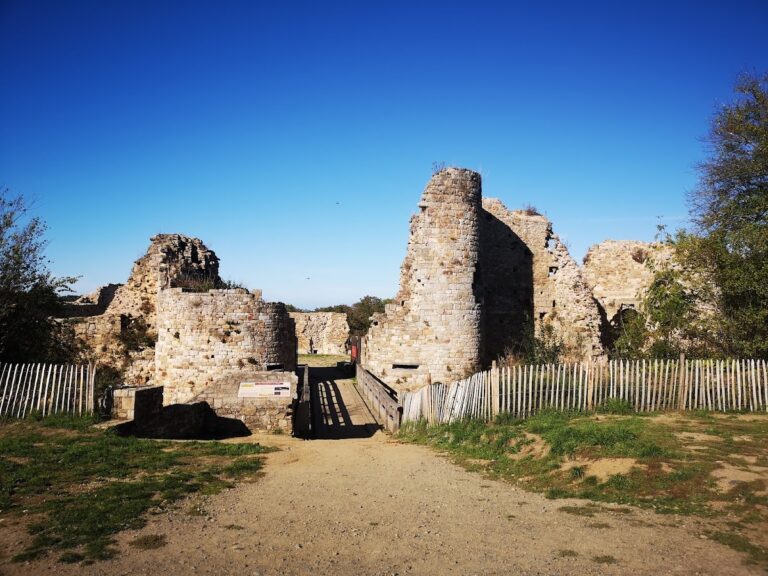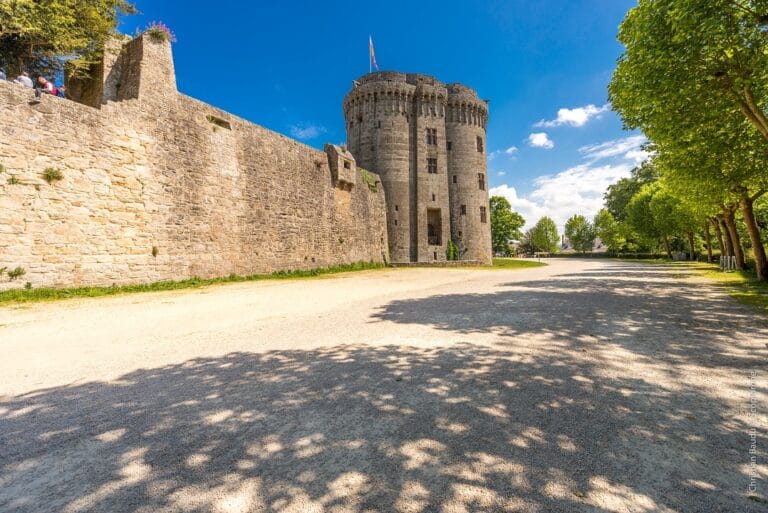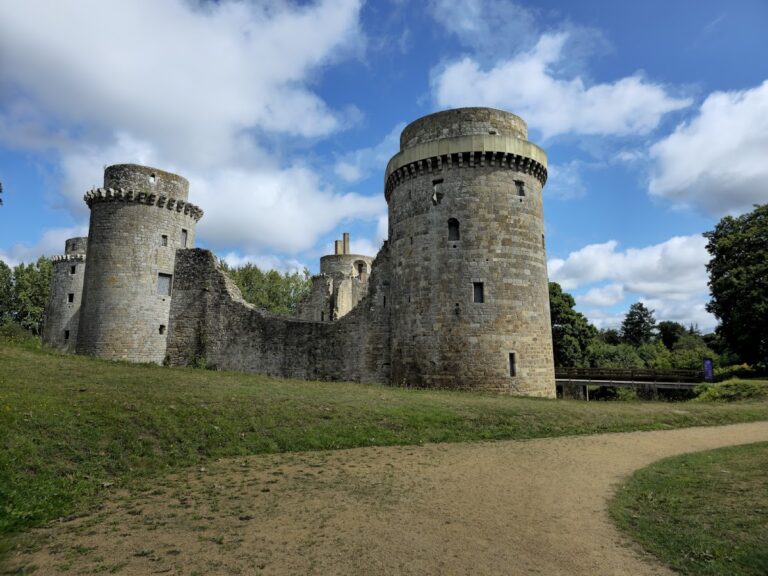Solidor Tower: A Historic Fortification in Saint-Malo, France
Visitor Information
Google Rating: 4.5
Popularity: Medium
Google Maps: View on Google Maps
Official Website: www.st-malo.com
Country: France
Civilization: Medieval European
Remains: Military
History
Solidor Tower stands on a rocky promontory at the mouth of the Rance River near the ancient city of Aleth, in what is now Saint-Malo, France. The site has been fortified since Roman times, with defensive structures dating back to the 4th century. The earliest known fortification here included the Tour d’Oreigle, also called Tour Aiquin, which functioned as a small gatehouse guarding the port of Aleth.
Between 1369 and 1382, John IV, Duke of Brittany, ordered the construction of the current fortified keep. This was a response to Saint-Malo’s rebellious stance against ducal authority. The tower’s main purpose was to control navigation on the Rance estuary and to oversee the collection of taxes on goods transported by boat. Its strategic position allowed the duke to monitor river traffic and assert control over the port.
In 1588, during the conflicts of the Breton League, the tower was seized by supporters of the Duke of Mercœur from Saint-Malo. By 1590, it was lightly garrisoned with a small number of soldiers and a captain. Later, in 1636, King Louis XIII ordered repairs to the tower. In 1694, the local inhabitants of Saint-Servan were given responsibility for its guard, and engineer Siméon Garangeau created plans to strengthen its defenses.
The original drawbridge was replaced by a stone bridge in 1756, reflecting changes in military architecture and access needs. Over time, as artillery and warfare evolved, the tower lost its military importance. During the French Revolution and the Napoleonic Empire, it was repurposed as a prison. It held priests, nuns, and soldiers, many of whom left graffiti on the interior cell doors.
In 1804, the tower was assigned to the French Navy. Later, in 1886, ownership passed to the Monuments Historiques administration. Architect Albert Ballu restored the tower and added the large roof that remains today. From 1970 until its closure in 2022, the tower housed a museum dedicated to Breton sailors and Cape Horn navigators. In 2003, a wooden albatross-shaped weather vane was donated by the Chilean section of the International Cape Horners Association.
A cross erected at the base of the tower in 1985 commemorates Jacques Cartier’s departure from this site in 1534 on his voyage to Canada. Before the construction of the Rance dam in 1967, a ferry operated from the Solidor quay across the river to Dinard, highlighting the tower’s continued role in local river traffic.
Remains
Solidor Tower is a fortified donjon composed of three round towers, each about 18 meters tall, connected by short curtain walls. These form a triangular layout on the rocky promontory overlooking the Rance estuary. The structure contains three floors linked by an internal staircase with 104 steps.
The tower is built primarily of stone, featuring medieval defensive elements. The original entrance included a drawbridge, which was replaced by a stone bridge in 1756. The small châtelet, a gatehouse from earlier fortifications, was incorporated into the complex and converted into a guardhouse.
Remnants of Gallo-Roman fortifications survive in the entrance bastion, preserving parts of the earlier defensive works. Nearby, the remains of a Roman stone causeway are visible at low tide. This causeway once connected the tower area to the ancient port of Aleth, reflecting a sea level approximately eight meters lower than today.
Inside, the prison cells retain graffiti left by prisoners held during the Revolutionary and Napoleonic periods. These inscriptions provide a direct link to the tower’s use as a place of incarceration. The tower’s current roof was added during the 19th-century restoration by Albert Ballu.
Since July 1886, Solidor Tower has been protected as a classified historic monument, ensuring the preservation of its medieval and Roman features. The site’s layout and construction continue to illustrate its role in controlling river navigation and trade traffic over many centuries.










